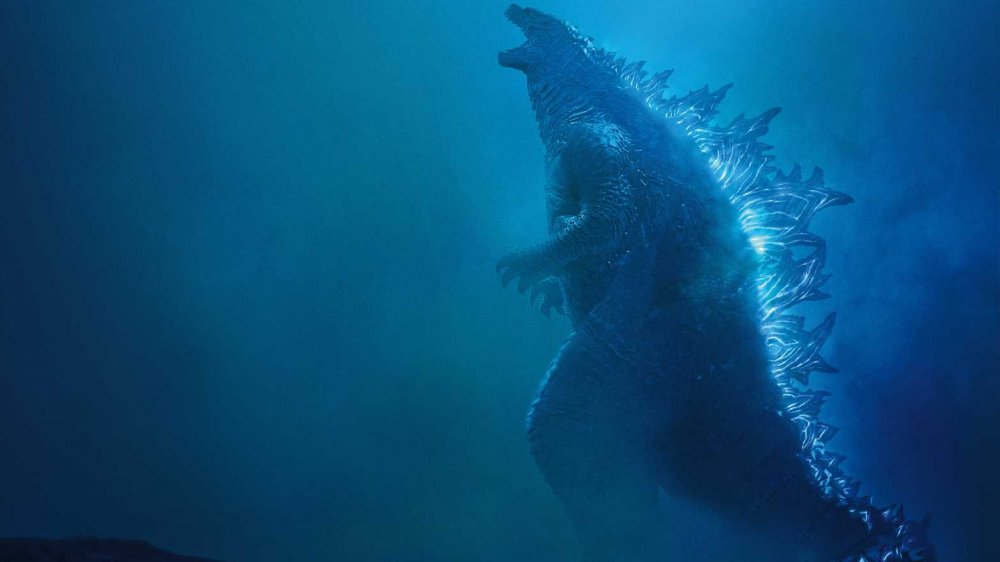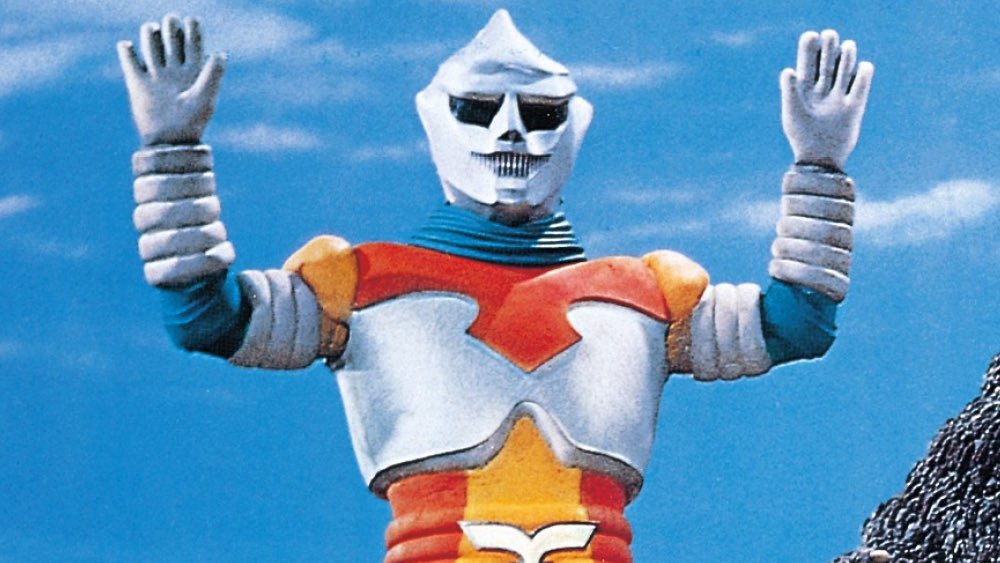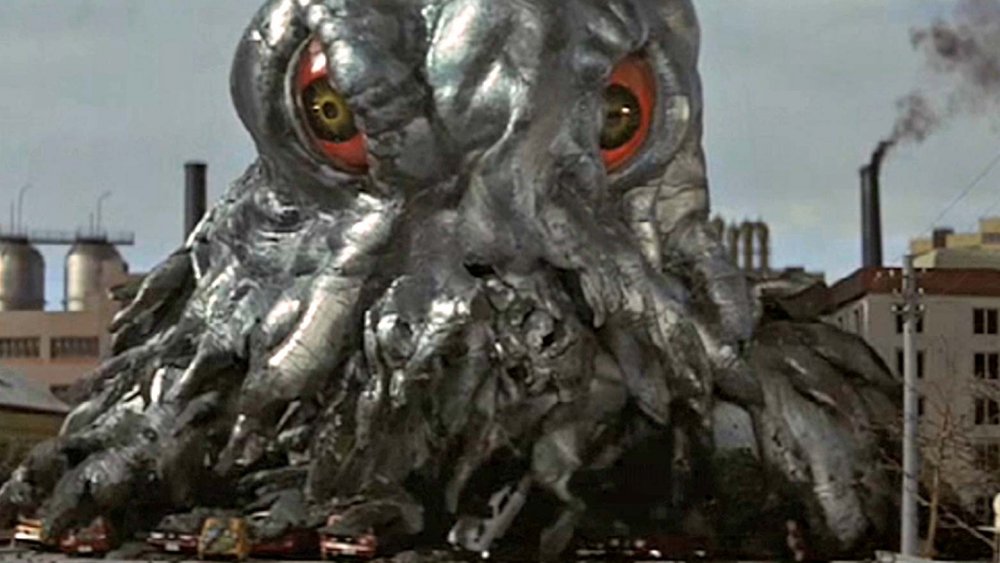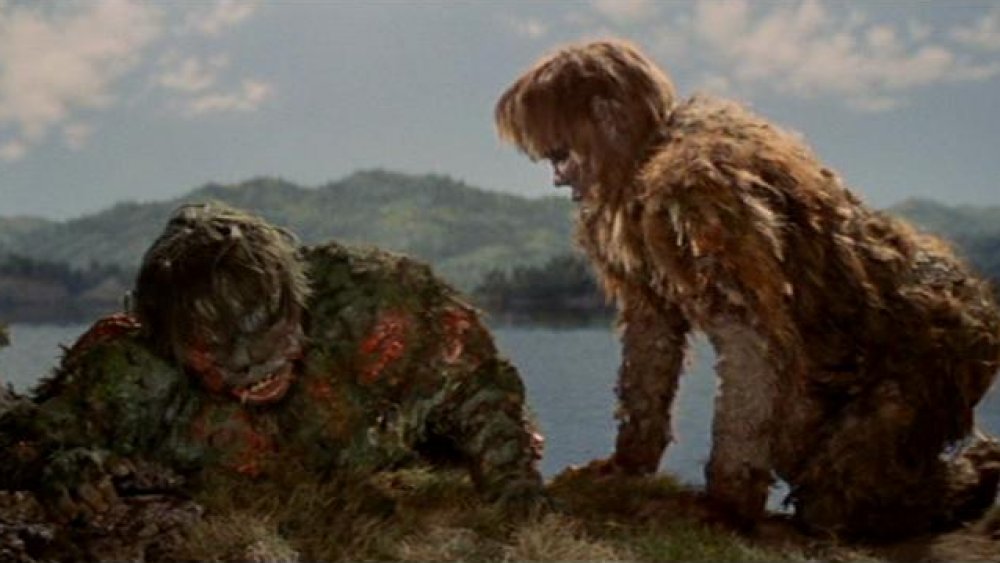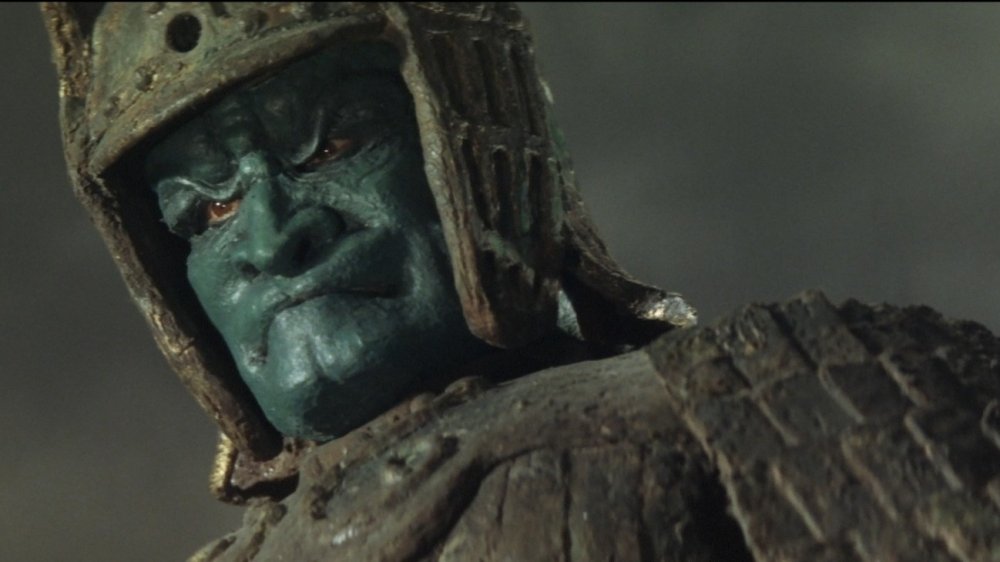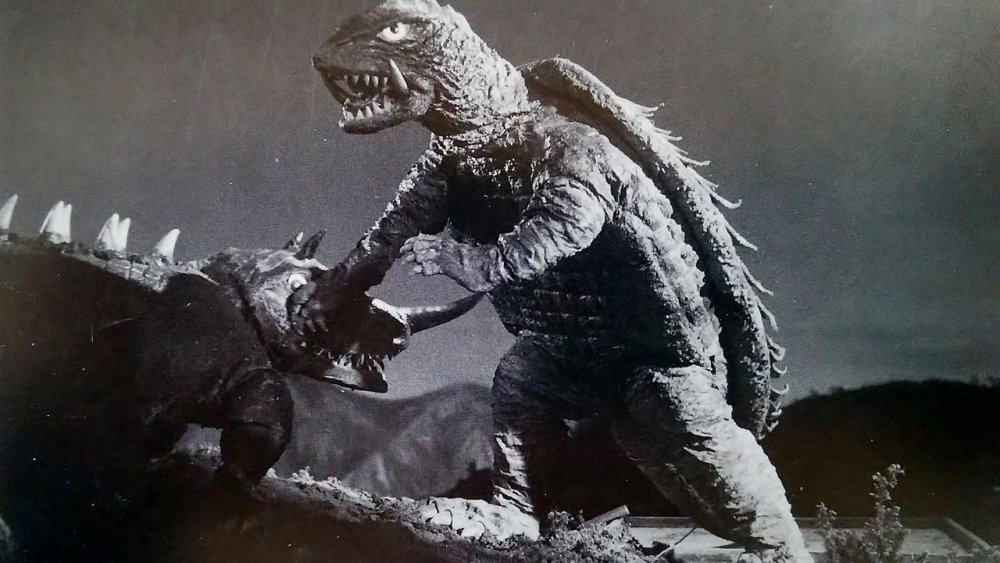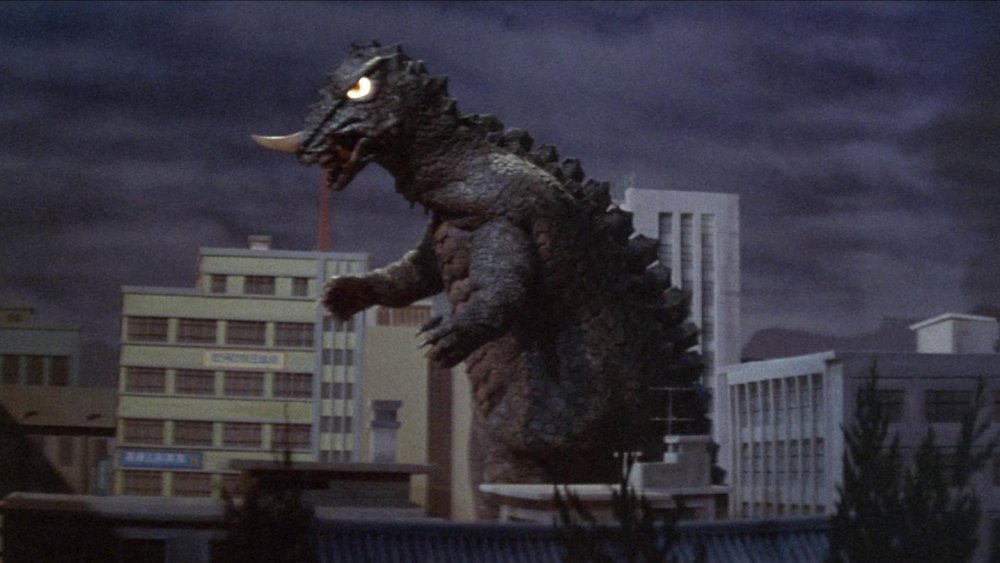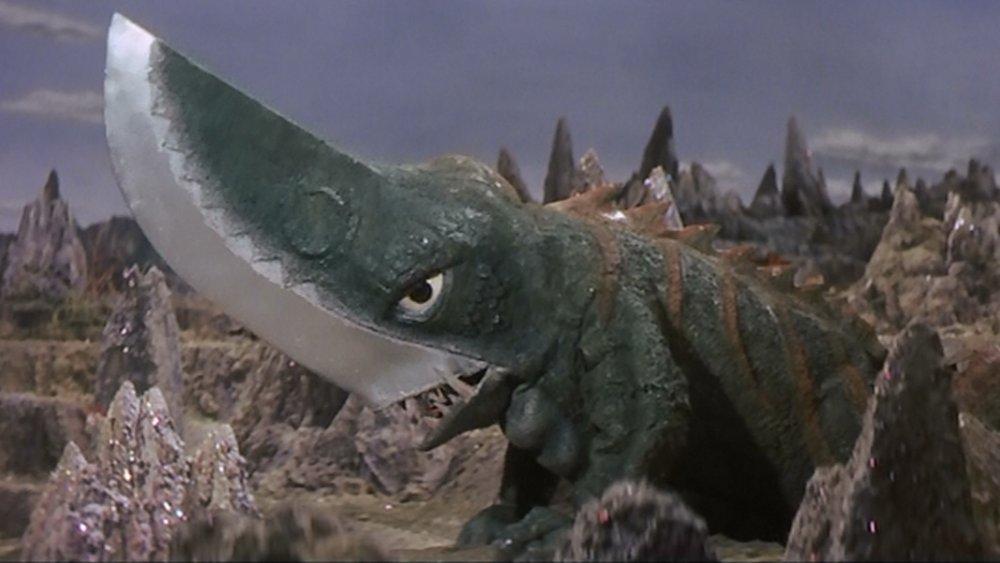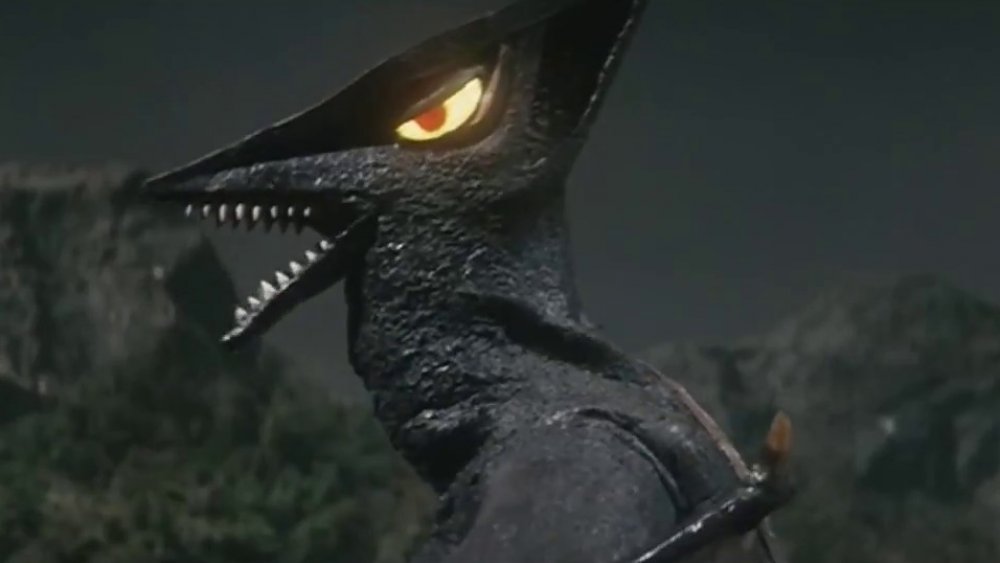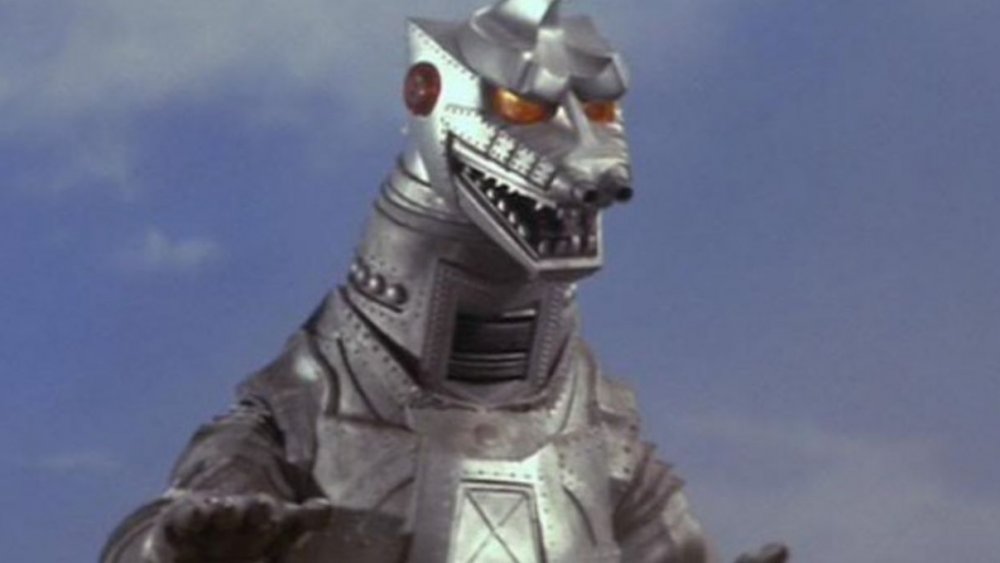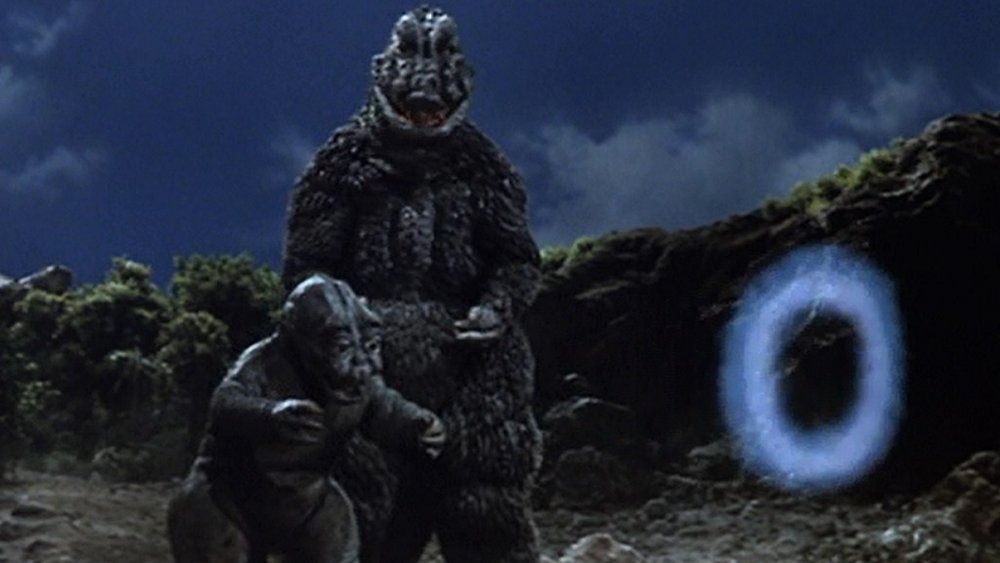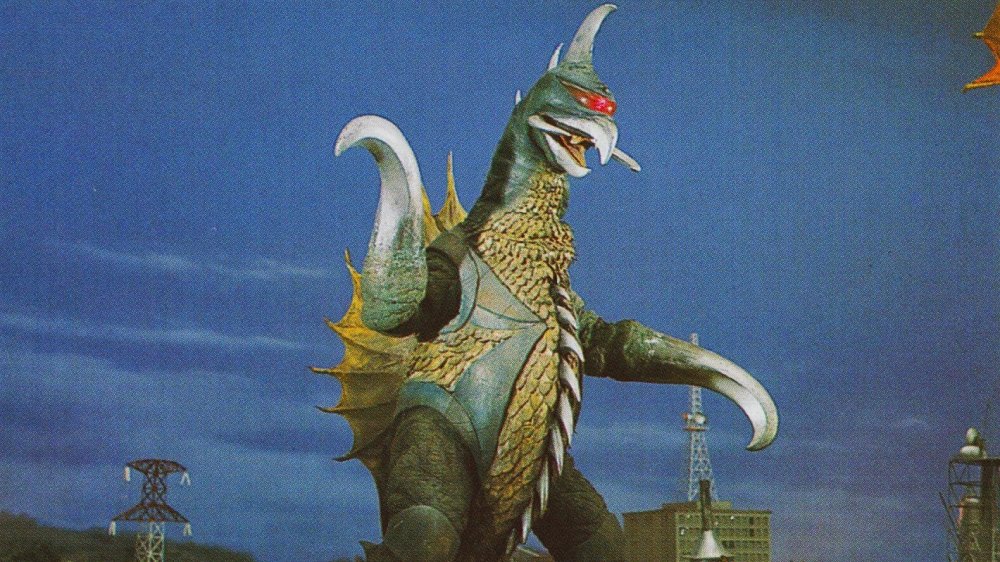Kaiju Characters We'd Love To See In Legendary's MonsterVerse
Legendary Entertainment's MonsterVerse is off to an exciting start. 2014's Godzilla, 2017's Kong: Skull Island, and 2019's Godzilla: King of the Monsters are thrilling tributes to the power of monster movies, inspired updates of classic characters, and, most importantly of all, just a whole lot of cinematic fun. Fan speculation has reached a fever pitch: What other creatures might appear as part of this new fictional universe? Who will ally with Godzilla, and who will be his foe? Will fans be plagued again by the likes of Godzooky?
The world of kaiju movies is vast, and the opportunities for rebooted, revamped, and otherwise re-imagined monsters are plentiful. But who among these beasts is best suited to stand beside Godzilla, King Kong, and all their other behemoth brethren in this brand-new fictional universe? From the mutated vampire bats to the skyscraper-sized turtles, these are the the kaiju we'd most like to see appear in Legendary's MonsterVerse.
Jet Jaguar
Although he only appears in 1973's Godzilla vs. Megalon, Jet Jaguar is a longtime favorite among Godzilla fans. Eager to capitalize on cultural interest in robots and superheroes, Toho held a contest in 1972 for fans to design a robot for their next movie. The winner was picked, his design tweaked, and his name changed from "Red Alone" to "Jet Jaguar" — but Toho wasn't ready to give him his own movie. Rather than headlining, he fights alongside Godzilla in Godzilla vs. Megalon.
Don't let that secondary status fool you, however: Jet Jaguar is no ordinary robot. Having gained sentience at an indeterminate point in his history, he is able to alter his own programming to suit the battle at hand. In terms of superpowers, he is enormously strong, capable of flight, and possesses two bright floodlights in his eyes, capable of blinding his opponents. Perhaps his most impressible attribute, however, is his ability to change his size. Though he typically stands at 5'9", he can grow to a towering 150 feet when necessary, though it does make him fairly slow. Beyond all of this, he's a stalwart hero who's quick with a handshake and friendly with kids. Jet Jaguar could be a sunny contrast to the MonsterVerse's otherwise taciturn denizens — plus, he has a killer theme song.
Hedorah
In a franchise full to bursting with bizarre creations, Hedorah still manages to stand out. Like Godzilla, Hedorah is a creature born of cultural concern: In creating him, director Yoshimitsu Banno sought to pit Godzilla against "the most notorious thing in current society." As Japan was then suffering through an epidemic of pollution-related diseases, Hedorah the smog monster was born. An alien from the "dark gas nebula," Hedorah began as tadpole, feasting upon toxic waste, ground pollutants, and gas emissions. By the time he reaches monstrous proportions, he is a festering behemoth of sludge and sickness.
At first, Godzilla was able to send Hedorah, not yet at his full size, packing. But Hedorah, gobbling up humanity's waste like the world's most disgusting buffet, grew quickly. Hedorah produces an acidic sludge capable of penetrating Godzilla's hide, cannot be touched without dissolving flesh down to the bone, and is able to divide into smaller versions of itself. In the end, Godzilla is able to defeat Hedorah with the help of humanity, who have constructed enormous electrodes capable of frying the smog monster into submission. It was, however, an enormously close fight that saw Godzilla lose an eye and his right hand. Now that's a match-up for the MonsterVerse.
The Gargantuas
Toho's 1966 film The War of the Gargantuas is a sequel to 1965's Frankenstein Conquers the World. The Gargantuas (called Frankensteins in Japan) are two enormous, ape-like monsters of tremendous strength. One of them, christened Gaira by the military, wreaks havoc across Japan, attacking fishing boats, airports, and hikers. The other, a brown creature called Sanda, is more gentle, and seeks to stop his brother before it is too late. Upon learning that Gaira has eaten people, however, Sanda realizes he cannot stop his "brother," and decides he must fight him to the death.
Sanda and Gaira would make an interesting addition indeed to the MonsterVerse. Gaira, bereft of conscience, would throw Godzilla's comparatively kind nature into interesting contrast — Big G doesn't exactly love humanity, but he's not about to let a creature like Gaira do harm to his planet and its people. Sanda would be on Godzilla's side, but intriguingly compromised by his desire to save his brother from a world that doesn't understand them. It's emotional, action-packed, and chock-full of special effects ripe for reinterpretation by modern artists.
Daimajin
Though Toho is the studio most associated with kaiju films, it isn't the only one. Daiei Film, for example, released a trilogy of movies in 1966 any monster maven worth his salt should know about: the Daimajin series. Daimajin is a giant stone statue, imbued with the spirit of an ancient yokai. Most of the time, Daimajin exists as a statue worshiped by nearby villagers. But when oppression threatens, they are able to summon the warrior inside, and Daimajin springs to life.
On paper, Daimajin might seem strange and even a little boring. After all, he spends most of his time as a rock formation. But his first movie appearance in 1966's Daimajin puts any and all doubts to rest: Once the statue comes to life, he's all action, all the time. Daimajin is almost overwhelmingly mighty, capable of turning into a fireball, filling his enemies' minds with haunting visions, and walking through buildings as though they were made of tissue paper. He is utterly unharmed by human attacks — only an act of kindness will stop his rampage. One wonders how Godzilla might stop him, given this unique power — or perhaps, how he might benefit Godzilla as an implacable ally. Either way, he's a creature unlike any other and a sterling candidate for the MonsterVerse.
Gamera
Gamera, sometimes known as "the friend to all children," is a massive, fire-breathing turtle of prehistoric origin. He first appeared in the 1965 film, Gamera, the Giant Monster, where, like Godzilla in his first film, he wreaks havoc upon Japan after being awakened by nuclear war. In later films, Gamera is more of a protector than an assailant, defending the Earth and its people against alien invaders and malicious kaiju. Gamera has a soft spot for children in particular, and will go out of his way to make sure they aren't hurt. Even in his first movie, he interrupts his rampage to save a young boy from a falling lighthouse. He is, as that boy goes on to deduce, misunderstood — and in time, the people of Earth embrace him.
So let's evaluate: Gamera is a giant turtle who can fly, breathe fire, and absorb massive quantities of energy, who has become beloved for his surprisingly gentle heart. Picture him fighting alongside Godzilla, atomic and fire breath spewing everywhere, Godzilla taking care of the surface while Gamera attacks from above. It's utterly fantastic — and utterly suited to the MonsterVerse.
Yongary
Keukdong Entertainment, a South Korean company eager to get in on the kaiju craze, teamed up in 1967 with Japan's Toei Company to produce Yongary, Monster of the Deep. Like Godzilla and Gamera, Yongary is reptillian creature awakened by human warfare. In his case, a nuclear test in the Middle East causes a massive earthquake in South Korea, where the ground splits in two. Yongary emerges from the depths of the planet, eager to wreck buildings, terrorize humanity, and stretch his giant legs.
Though Yongary wreaks much havoc upon Seoul, intrepid scientist Il-Woo eventually devises a chemical capable of bringing Yongary to heel. But until that moment of triumph, Yongary is a kaiju unlike any other. Positioned somewhere between being an inveterate beast and a misunderstood protector, Yongary is weird. He is, as Il-Woo opines, only hungry, seeking out his favored meals of oil and gasoline, and a third-act scene sees him dance, much to the delight of a young boy. But in the end, he is defeated like any other kaiju by a specially concocted precipitate of ammonia. The MonsterVerse could resurrect Yongary to tremendous effect — just picture him teaching Godzilla how to boogie.
Guiron
Debuting in the Daiei's 1969 movie, Gamera vs Guiron, this knife-headed foe is an interesting match for Gamera. Gamera, on a rescue mission to help a couple of kids who were kidnapped from Earth onto a mysterious spaceship, encounters Guiron in his role as guard dog. His masters are a pair of alien women, Florbella and Barbella, who plan to eat the boys' brains, which will, they think, allow them to absorb the boys' knowledge. Yes, this is a kid's movie. Guiron is a capable beast, his bladed skull able to bisect monsters with ease. But that's not his only power — his blade conceals shuriken he can control telepathically.
In the end, Guiron isn't actually very interested in protecting his cannibalistic masters. One of the boys, in the process of releasing the other, accidentally frees Guiron — who proceeds to destroy his surroundings, attack Florbella and Barbella, and generally rampage across the planet. Both Florbella and Barbella die as a result of his rage, which only ends when Gamera rams Guiron head-first into the earth. There he dies, the forgotten watch dog of two of kaiju culture's weirdest villains — but who says his story has to end there? As a denizen of the MonsterVerse, Guiron could provide some magnificent melee mayhem. He's sharp, he's angry, he's the closest thing kaiju have to a canine beast. What's not to love?
Gyaos
A vampire bat-like kaiju, Gyaos has been an enemy of Gamera since 1967's Gamera vs. Gyaos. A genetically engineered creature, he is a swift and capable flyer, can fire a precise energy beam from his mouth, and exudes a thick, yellow fog that quenches Gamera's fire. Like a vampire, Gyaos feeds on blood, no matter its source: In his first movie, he eats livestock and humans alike. Also like a vampire, he isn't able to withstand sunlight for very long. This makes him very vulnerable — though other Gyaos-esque beasts exist that lack this critical weakness.
Gyaos seems to have been Daiei Film's version of Rodan, both being a type of pteranodon who emerge from volcanoes. Rodan is already in the MonsterVerse, of course, having made his debut in Godzilla: King of the Monsters — but imagine Gyaos as his foe. An aerial battle between the two would be absolutely thrilling, especially with the added twist of Gyaos' vampirism. As mayhem unfolds on the ground, these two could be battling it out in the skies, complete with laser beams, blood-drinking, and misty, sun-blocking fog.
Mechagodzilla
A robotic version of Godzilla, Mechagodzilla first appeared on screen in the 1974 movie Godzilla vs Mechagodzilla. There, he is introduced as a weapon created by aliens, who intend to conquer the Earth. Later iterations re-imagine Mechagodzilla as a a defense measure created by human authorities to defend against Godzilla himself. In every version, Mechagodzilla is massively powerful: He launches missiles from his extremities, fires energy beams from his chest and eyes, can create a durable force field, and is constructed from indestructible materials. It takes a team-up between Godzilla and King Caesar, another 1974 debut, to finally defeat Mechgodzilla by ripping off his head and blowing his body apart.
Whether he arrives from beyond the stars or was constructed by panicked humanity, Mechagodzilla is well-matched foe for Godzilla to face. His backstory, already subject to change, would take well to modern tweaking, while his design is a feast for those in charge of visual effects. Imagine a Mechagodzilla empowered by artificial intelligence, nanotechnology, or quantum physics, up against a beast of raw, organic power. It's the stuff of cinematic dreams, and deserves a place in the MonsterVerse.
Minilla
Debuting in 1967's Son of Godzilla, Minilla is the titular offspring, adopted by Godzilla when he is prematurely hatched by mutant predators. The pair are an unlikely duo, and their movie is unique among Godzilla's films: Son of Godzilla features scenes of Godzilla teaching Minilla how to roar like a proper kaiju, produce atomic breath, and interact with humanity. In the end, the two of them are frozen by panicked scientists wielding weather-altering technology. Godzilla and Minilla go into hibernation, though that wouldn't be the last audiences would see of the miniature monster. 1999's Destroy All Monsters reintroduced Minilla to modern audiences, and was followed by a handful of movies in which the tiny titan features.
The MonsterVerse might not seem like the place for an infant kaiju, let alone scenes of father-son bonding. But consider the idea stripped to its essentials: A helpless beast, uninhibited in its power, rampaging across the globe. Godzilla could take this version of Minilla under his wing, or perhaps they'd just battle it out like monsters. The appeal endures, regardless, as something the MonsterVerse would do well to explore.
Gigan
Gigan is one of the strangest looking monsters in the Godzilla universe — which is saying a lot, for a franchise featuring robotic Godzilla dopplegangers and enormous moths. He is cybernetic, with a giant buzz-saw embedded in his belly, hooks for hands, steel spikes running down his back, and a broad red visor that acts as an eye. Yet his hide, beak, and scales are reptillian. Debuting in 1972's Godzilla vs. Gigan, he is a mystery unto himself — and boy, does he play dirty. Gigan enjoys hurting his opponents for the sake of it, shredding them with his buzz saw belly at brutally close range. Yet for all his sadistic glee, Gigan is the first to run away when a fight turns against him. He might be a giant robotic dinosaur, but he's still a bit of a coward.
2004's Godzilla: Final Wars introduced a far more streamlined Gigan that would suit the MonsterVerse perfectly. He's far sleeker, more coherently robotic, and sports a few new weapons. Sure, there's still something goofy about him, but that's the fun of it — after all, who goes to a Godzilla movie for realism? Introducing a synthetic baddie to the MonsterVerse's organic array is a tantalizing idea ... just as long as they keep the buzz saw in Gigan's belly.
